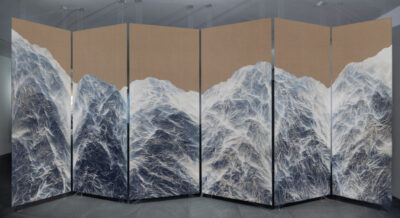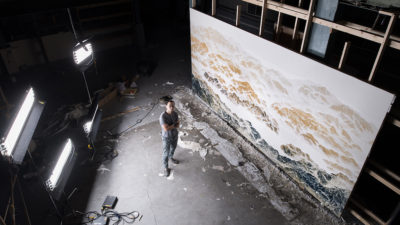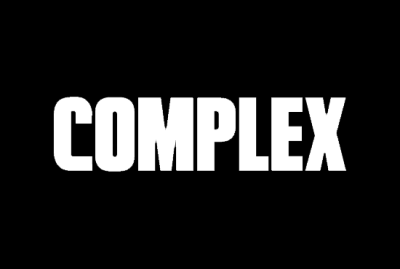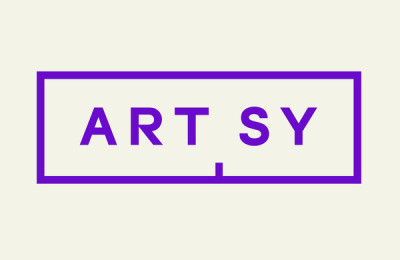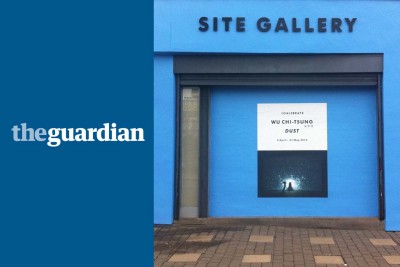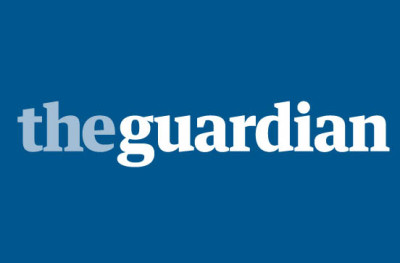
[Exhibition Review by Living and Design] Beyond the Physical Form
[Living and Design 住宅美學專稿] 超脫物形的藝術旅程
Recently, Wu Chi-Tsung’s new solo exhibition “Seeing Through Light” at Tao Art Space was reported by Living and Design Magazine. The article introduces, ‘In this exhibition, Wu Chi-Tsung retraces his initial interests and continues his exploration of visual expressions, and once again develops a different video shooting technique. For Wu Chi-tsung, it is not necessary to pay too much attention to the individual works themselves. What is more crucial is to develop a unique Weltanschauung and to establish the form, language, thinking and perspective of viewing art in the process of developing the works. The value of the artwork as a “thing” is not high, but as a starting point to lead into a certain spiritual journey, in which the artist gives the object to verify the existence of the journey, giving it an “intangible” value. 前言: 在海外發展多年的現代藝術家-吳季璁,除了香港世界畫廊正在進行中的個展-《現》外,回到故鄉台北,由策展人王嘉驥老師在Tao Art Space策劃今年另一個展「照見」,少時在傳統學院派的藝術薰陶浸淫多年的吳季璁,自大學開始才進入當代藝術的領域,發展如影片、攝影、光影裝置等新媒體的創作方法,新舊衝突下的斷裂與拉扯中,成就自身的藝術方向,而場地為去年成立的Tao Art Space,因一張委託的《氰山集》系列作品,經介紹認識業主及收藏家Vicky,而開啟了這次展覽的緣分。 修行即為創作 作品驗證藝術旅程 西方藝術受到東方思想衝擊較大的時期,為佛學禪宗大師-鈴木大拙到美國與歐洲講學開始,影響並啟蒙許多現當代藝術家的創作方向,而日本當時擁有最完整的禪宗傳播系統,教義上相比藏傳佛教更類似哲學探討。 對吳季璁來說,不需要給予個別作品本身過多的關注,如何發展發展作品的過程中,建立其世界觀及形式、語言、思考以及觀看藝術的角度更為關鍵,如只專注在單一作品本身,容易錯失背後更大的思維起點。藝術品做為「物」的本身的價值並不高,而是做為一個出發點導引進入某段精神上的旅程,其中,藝術家賦予物品驗證旅程的存在,使之擁有「無形」的價值。談到外界對於藝術家認知的謬誤,以為作品是創作者自我傲氣與任性下的產物,然而在真實的藝術創作中,需要先放下自我,順勢作品發展。吳季璁在藝術的修行過程,時常面對佛家思想中如何放下「我執」的命題,相信某些材質會因宿命而出現在生活中,過於控制作品容易畫地自限,然自我的執念越輕,而創作的可能性會帶領你到意想不到的境地,以上透過佛家與禪宗談到許多,與創作相關的思維模式。 重現傳統攝影技術 擷取「無常」中的真實 本次展覽《照見》也特別呈現了幾件吳季璁早期作品, 2004年的《自畫像》詮釋人是不斷變動的一種生物,如佛家談到的「無常」,也是時間流中的一部分碎片,利用攝影技法捕捉流逝的「剎那」,在暗室中面對鏡頭,使用手電筒描繪臉部,長曝後呈現不完全的面部狀態,並透過幻燈片與暗房沖洗,反映影像的可能性與有別於傳統自畫像命題的樣貌。當年度正是傳統底片攝影逐漸式微,數位影像抬頭興起的階段,藝術家以作品自身作為一份傳統攝影的紀念,呈現衝突且看似失真的真實紀錄。 實驗攝影的技術發展到2012年,吳季璁感於數位攝影的便利性與單一性,嘗試回到技術本質的探討,在《皴法習作》與其後的《氰山集》系列,運用與攝影術幾乎同時發明的氰版藥劑和無相機攝影方法,在揉皺傳統中國書畫的宣紙後,塗上感光藥劑置放在陽光下進行自然曝曬,充分水洗即顯影出藍色的影像,自然如同岩石山景般的層次,意像呈現傳統水墨千山連綿的壯闊之景。 超脫時間的完美狀態 放下「我執」重新導引 許久未在台北發表作品的吳季璁,經介紹了收藏家及展場業主,Vicky 和父親都熱愛收藏,父親偏愛以佛像和宋元瓷器為主的古美術及台灣現代藝術,而 Vikcy 則是以國內外當代藝術為主。Tao Art 獨有的兩代收藏經歷,揉雜古今正好與吳季璁的創作路線不謀而和,成就了這次吳季璁和 Tao Art 胡不堂佛像收藏的合作。 「照見」在佛典中言意為「指向開悟成佛的透徹與超脫」,佛學中的修行,與藝術創作有極為相似的精神軌跡,雖然其過程有所不同,卻有相同的內化反應,與自我掙扎下的拆解體驗。本次展覽中,吳季璁重新回溯最初的創作思維,延續從自畫像時期開始的影像探索,再次發展出有別以往的影像處理技巧,在新作《寫生習作》拍攝初期,原本想以破碎的形式呈現捕捉胡不堂所藏佛像「剎那」下的真實,當他注視著這經歷千年的佛像,反思面對自己或人皆是變動不定的命數,而佛像卻擁有超脫其中的完美狀態,使他放下了當初設定的詮釋方法,透過光影重新測試、觀察引導,內化佛學與藝術的相互印證,重新理解「照見」的命題。 Written by 文/ Erin Song
READ MORE



